Showing Spotlights 1097 - 1104 of 2784 in category All (newest first):
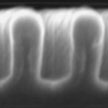 In recent years, polymer solar cells have drawn considerable research interest due to their attractive features including flexibility, semi-transparency, and manufacturability using cost-effective continuous printing processes. However, one challenge limiting their commercialization is the relatively low power conversion efficiency when compared to inorganic solar cells. New work shows that low bandgap polymer solar cells with high efficiency of 5.5% can be fabricated using nanoimprint lithography.
In recent years, polymer solar cells have drawn considerable research interest due to their attractive features including flexibility, semi-transparency, and manufacturability using cost-effective continuous printing processes. However, one challenge limiting their commercialization is the relatively low power conversion efficiency when compared to inorganic solar cells. New work shows that low bandgap polymer solar cells with high efficiency of 5.5% can be fabricated using nanoimprint lithography.
Nov 12th, 2014
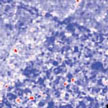 Researchers are confident that graphene may outperform existing transparent conductive materials. However, monolayer graphene might not be sufficient for fabricating a highly conductive electrode. The dilemma is that the transmittance of graphene film decreases as the number of layers increases. It therefore is of great importance to have a fast and reliable method to determine the number of layers in the fabrication and measurement of multilayer graphene.
Researchers are confident that graphene may outperform existing transparent conductive materials. However, monolayer graphene might not be sufficient for fabricating a highly conductive electrode. The dilemma is that the transmittance of graphene film decreases as the number of layers increases. It therefore is of great importance to have a fast and reliable method to determine the number of layers in the fabrication and measurement of multilayer graphene.
Nov 11th, 2014
 Researchers have demonstrated that they can print interwoven structures of quantum dots, polymers, metal nanoparticles, etc, to create the first fully 3D printed LEDs, in which every component is 3D printed. At the fundamental level, 3D printing should be entirely capable of creating spatially heterogeneous multi-material structures by dispensing a wide range of material classes with disparate viscosities and functionalities, including semiconducting colloidal nanomaterials, elastomeric matrices, organic polymers, and liquid and solid metals.
Researchers have demonstrated that they can print interwoven structures of quantum dots, polymers, metal nanoparticles, etc, to create the first fully 3D printed LEDs, in which every component is 3D printed. At the fundamental level, 3D printing should be entirely capable of creating spatially heterogeneous multi-material structures by dispensing a wide range of material classes with disparate viscosities and functionalities, including semiconducting colloidal nanomaterials, elastomeric matrices, organic polymers, and liquid and solid metals.
Nov 5th, 2014
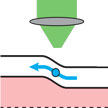 There has been a long debate in the nanotube community regarding the photocurrent generation mechanisms in individual nanotube devices. In early optoelectronic studies with single-walled carbon nanotubes, the interpretation of photocurrent was mostly based on photovoltaic mechanisms. In new work, researchers use the extra tunability of a double-gated device to conclusively demonstrate that strong photothermal effects are present in carbon nanotube devices.
There has been a long debate in the nanotube community regarding the photocurrent generation mechanisms in individual nanotube devices. In early optoelectronic studies with single-walled carbon nanotubes, the interpretation of photocurrent was mostly based on photovoltaic mechanisms. In new work, researchers use the extra tunability of a double-gated device to conclusively demonstrate that strong photothermal effects are present in carbon nanotube devices.
Nov 4th, 2014
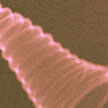 Inspired by nature's ingenious biological designs, researchers have persistently attempted to mimic these biofunctionalities to bring technological breakthroughs. One of these morphologies - the unique shape of a helical coil - is not only interesting from a scientific standpoint but also pivotal, offering DNA its distinctive properties and propelling flagella in viscous fluids, to name a few. With the advent of personalized medicine on the horizon, researchers are now trying to use tiny springs made of carbon nanotubes, i.e. nanocoils, to propel nanorobots to perform microsurgeries.
Inspired by nature's ingenious biological designs, researchers have persistently attempted to mimic these biofunctionalities to bring technological breakthroughs. One of these morphologies - the unique shape of a helical coil - is not only interesting from a scientific standpoint but also pivotal, offering DNA its distinctive properties and propelling flagella in viscous fluids, to name a few. With the advent of personalized medicine on the horizon, researchers are now trying to use tiny springs made of carbon nanotubes, i.e. nanocoils, to propel nanorobots to perform microsurgeries.
Oct 31st, 2014
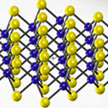 Molybdenum disulfide's (MoS2) semiconducting ability, strong light-matter interaction and similarity to graphene makes it of interest to scientists as a viable alternative in the manufacture of electronics, particularly photoelectronics. In pushing towards practical optical applications of two-dimensional (2D) MoS2, an essential gap on understanding the nonlinear optical response of 2D MoS2 and how it interacts with light, must be filled.
Molybdenum disulfide's (MoS2) semiconducting ability, strong light-matter interaction and similarity to graphene makes it of interest to scientists as a viable alternative in the manufacture of electronics, particularly photoelectronics. In pushing towards practical optical applications of two-dimensional (2D) MoS2, an essential gap on understanding the nonlinear optical response of 2D MoS2 and how it interacts with light, must be filled.
Oct 30th, 2014
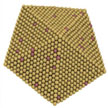 Gold-copper alloys are very popular catalysts in nanotechnology, for instance to efficiently convert carbon dioxide or to help fabricate a more powerful and longer lasting fuel cell material. This alloy exhibits novel physical and chemical properties at the nanoscale. Although the Au-Cu alloy has been extensively studied in the literature both at the bulk and nanoscales, the prediction of phase diagrams at the nanoscale has been missing. A new paper present sthe phase diagram of Au-Cu at the nanoscale for the relevant distinct polyhedral morphologies of nanoparticles at sizes 4 nm and 10 nm.
Gold-copper alloys are very popular catalysts in nanotechnology, for instance to efficiently convert carbon dioxide or to help fabricate a more powerful and longer lasting fuel cell material. This alloy exhibits novel physical and chemical properties at the nanoscale. Although the Au-Cu alloy has been extensively studied in the literature both at the bulk and nanoscales, the prediction of phase diagrams at the nanoscale has been missing. A new paper present sthe phase diagram of Au-Cu at the nanoscale for the relevant distinct polyhedral morphologies of nanoparticles at sizes 4 nm and 10 nm.
Oct 29th, 2014
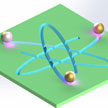 The complexity and high cost of the state-of-the-art high-resolution lithographic systems are prompting unconventional routes for nanoscale manufacturing. Inspired by natural nanomachines, synthetic nanorobots have recently demonstrated remarkable performance and functionality. Nanoengineers now have invented a new nano-patterning approach, named Nanomotor Lithography, which translates the autonomous movement trajectories of nanomotors, or nanorobots, into controlled surface features that brings a twist to conventional static optical fabrication systems.
The complexity and high cost of the state-of-the-art high-resolution lithographic systems are prompting unconventional routes for nanoscale manufacturing. Inspired by natural nanomachines, synthetic nanorobots have recently demonstrated remarkable performance and functionality. Nanoengineers now have invented a new nano-patterning approach, named Nanomotor Lithography, which translates the autonomous movement trajectories of nanomotors, or nanorobots, into controlled surface features that brings a twist to conventional static optical fabrication systems.
Oct 28th, 2014
 In recent years, polymer solar cells have drawn considerable research interest due to their attractive features including flexibility, semi-transparency, and manufacturability using cost-effective continuous printing processes. However, one challenge limiting their commercialization is the relatively low power conversion efficiency when compared to inorganic solar cells. New work shows that low bandgap polymer solar cells with high efficiency of 5.5% can be fabricated using nanoimprint lithography.
In recent years, polymer solar cells have drawn considerable research interest due to their attractive features including flexibility, semi-transparency, and manufacturability using cost-effective continuous printing processes. However, one challenge limiting their commercialization is the relatively low power conversion efficiency when compared to inorganic solar cells. New work shows that low bandgap polymer solar cells with high efficiency of 5.5% can be fabricated using nanoimprint lithography.
 Subscribe to our Nanotechnology Spotlight feed
Subscribe to our Nanotechnology Spotlight feed





